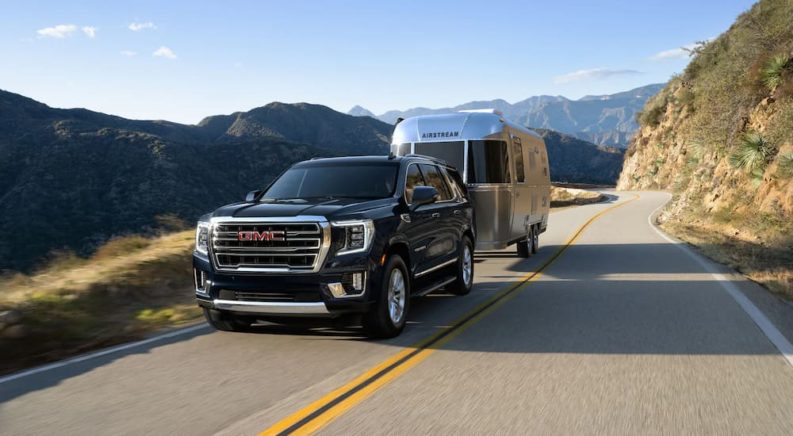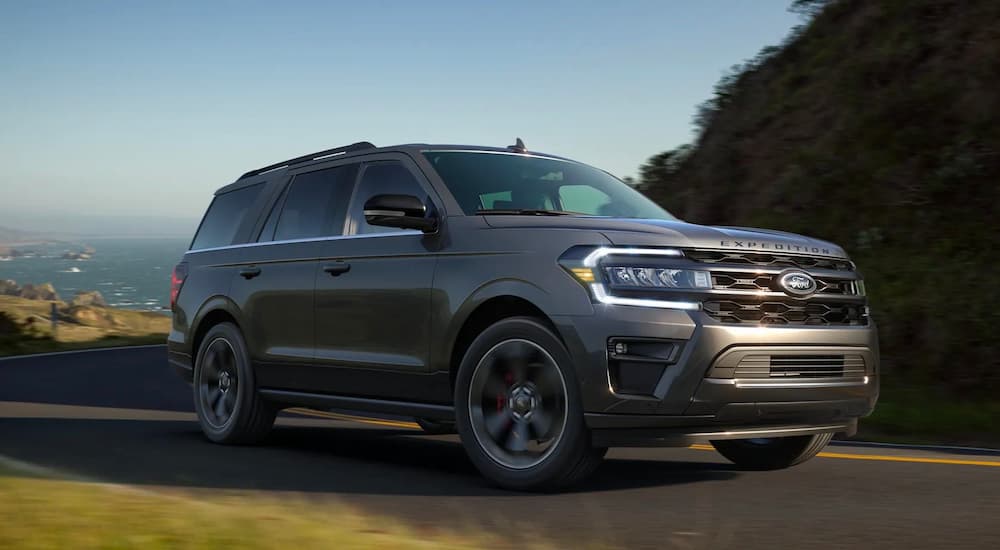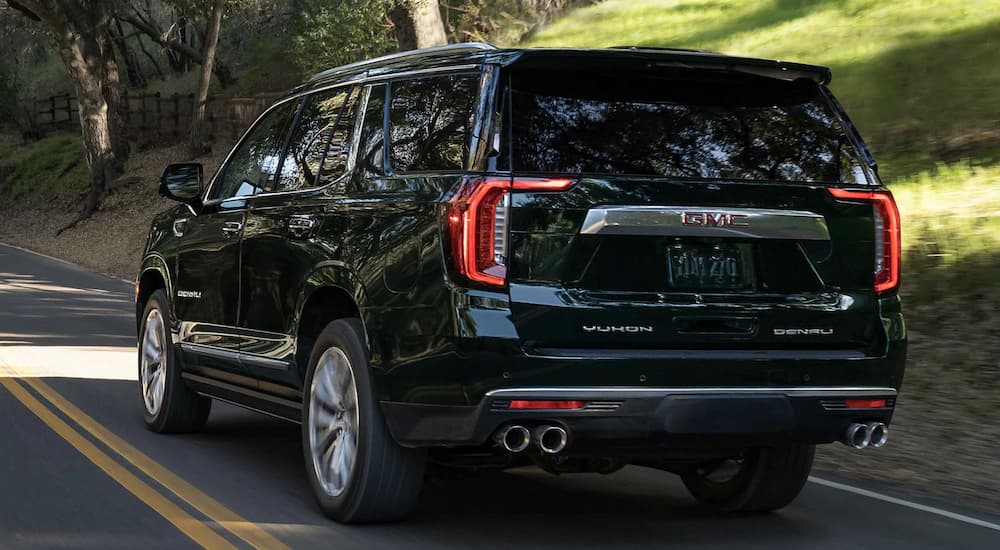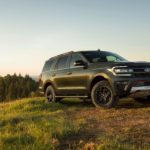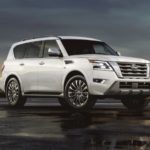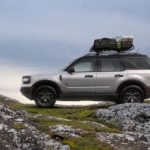What is it about SUVs that make them unique? Is it performance or versatility? Trick question–the true answer is that performance and versatility are only small portions of what an SUV can offer. The real potential lies within the cabin. There are plenty of much smaller vehicles that offer incredible performance–simply take a look at the Mustang Shelby GT500 with its 900 hp engine–but no sports car can offer the sheer space and comfort of a full-size SUV. But what full-size SUV is the best? It’s time to compare the 2022 GMC Yukon vs 2022 Ford Expedition and find out. While Ford’s flagship has a bit more power than GMC’s largest model, the competition is fierce, and the Yukon has its own tricks up its sleeve.
In regards to trims and available pricing, the 2022 Yukon starts at $52,100 for the base trim, the SLE, while the 2022 Expedition has a slightly lower start price. For the Expedition, customers will have seven trim levels to select from, making the shopping experience feel a bit clustered against the Yukon’s four trims. If function over form is more your thing, shopping for the Yukon will be a much more streamlined and enjoyable experience overall. Each SUV offers a wide variety of features across its trim levels, and each one has an off-roading capable trim level, with the Timberline serving as the Expedition’s off-roader and the AT4 for the Yukon.
You Must Be This Tall to Ride the Rides
If the vehicle you’re planning on purchasing is a full-size SUV, then it had better look like it. After all, you’re purchasing a full-size SUV, not a compact crossover. Between the Yukon and Expedition, the most significant differences can be found inside the vehicle. Surprisingly, when you sit in both vehicles, you’ll likely fit the same. With that in mind, both SUVs should give tall passengers no issues whatsoever–lending a comfortable ride from start to finish.
Although these two vehicles share similar dimensions, the real difference-maker comes down to both cargo space and passenger capacity. The latter is arguably the most shocking because the Yukon will come standard with eight seats, as a full-size SUV should. How about the Expedition, you may ask? Ford’s full-size SUV will come standard with just five seats in its base trim. In the grand scheme of things, this is inexcusable. If you want to maximize the Expedition’s available seats, you can opt for eight seats in the higher trims, which is fine until you learn the Yukon comes standard with that feature. Can the Yukon go any further? Yes, it can; you can add one more seat if you so wish, bringing the total to nine passengers. Now, that’s how you create a full-size SUV. Ford should take note of this one.
Exactly how similar are the dimensions we mentioned earlier? For starters, sitting in the front row of the Yukon gives you 42.3-inches of headroom against the Expedition’s 42.0-inches. Legroom tells a similar story with 44.5-inches in the GMC and 43.9-inches for Ford’s SUV. Both SUVs continue to throw equal punches for backseat passengers, with the Yukon giving the second-row more legroom and the Expedition offering a bit more third-row legroom. We see a reversal when it comes to the headroom, however, with GMC’s SUV giving passengers in the third-row more headroom than the Expedition, while Ford’s SUV has more headroom for second-row passengers. See what we mean by eerily similar? However, we mentioned cargo space is what separates the two, and it’s a game-changer.
Everything and the Kitchen Sink
As we’ve established, a large and spacious interior with enough room to fit either eight or nine passengers is the first key step towards producing a successful full-size SUV, with cargo space being the next. Simply put, if cargo space was not a concern of yours, you would have opted for either a cheaper and smaller SUV or a sedan. Between the Yukon and Expedition, there’s no contest. However, a silver lining for the Expedition can be found in its MAX configuration. In the standard variety, the Yukon steals the show. As you know, folding down each row of seats grants more cargo space to the vehicle’s occupants. In all three categories, the Yukon gives drivers more space.
Impressively, if you have all nine passengers on board, the Yukon will still have enough room to give you 25.5 cu.ft. of cargo space. By comparison, the Expedition gives its maximum of eight passengers a total of 20.9 cu.ft. of space. That’s a 22% increase in GMC’s SUV, and it only gets better from there. Folding down the third-row seats inevitably increases the cargo space significantly, but the Yukon still outshines the Expedition with 72.6 cu.ft. of space against 63.6 cu.ft. This time around, this is a 14% increase for the Yukon, and while both are undoubtedly impressive, the Yukon will be able to fit an incredible amount of cargo while still carrying up to five passengers. Let’s say you’re taking the family away on vacation for the entire summer; you’ll have enough room to pack your belongings for an entire season.
Lastly, when you need all of the available space for traveling with something grandiose, such as a massive home theater setup–television and all–you can fold down both of the back rows. Once folded, the true reason why you should purchase a full-size SUV becomes clear. In this form, the Expedition will give you 104.6 cu.ft. of cargo space. Sure, this is impressive, but it’s not enough. Folding down backseats in the Yukon reveals an incredible 122.9 cu.ft. of available space, which is 17.5% more than the Expedition. The one exception is the Expedition’s MAX configuration, which sees this increased to 121.5 cu ft, but still falls slightly short of the Yukon. When you need space the most, you don’t want to settle for anything smaller than the best because you’ll wish you hadn’t if you ever come up short on room.
It’s Simple, Really
Between the two manufacturers, both create quality vehicles–and this is apparent because their fanbases number in the millions. Manufacturers compete; that much is clear. But the true complexity of it all is best seen when GMC and Ford dish it out. In general, both vehicles encapsulate what makes a full-size SUV worth owning, but it’s the Yukon that wins this battle. For the most part, comparable performance combined with a vastly more versatile interior is what makes GMC’s offering the better purchase. That small increase in horsepower and torque you’ll get with the Expedition doesn’t make up for its standard five-passenger capacity and limited cargo space.
Full-size SUV drivers should look no further than the GMC Yukon, and if you’re relatively new to the scene of full-size SUVs, the Yukon is a guaranteed way to secure yourself one of the best examples on the market. It’s hard to deny the Yukon and Expedition both have strengths and weaknesses. However, against the GMC Yukon, the Ford Expedition still has plenty of work to do if it wants to keep up with its competition, which steadily grows stronger with each passing year.

